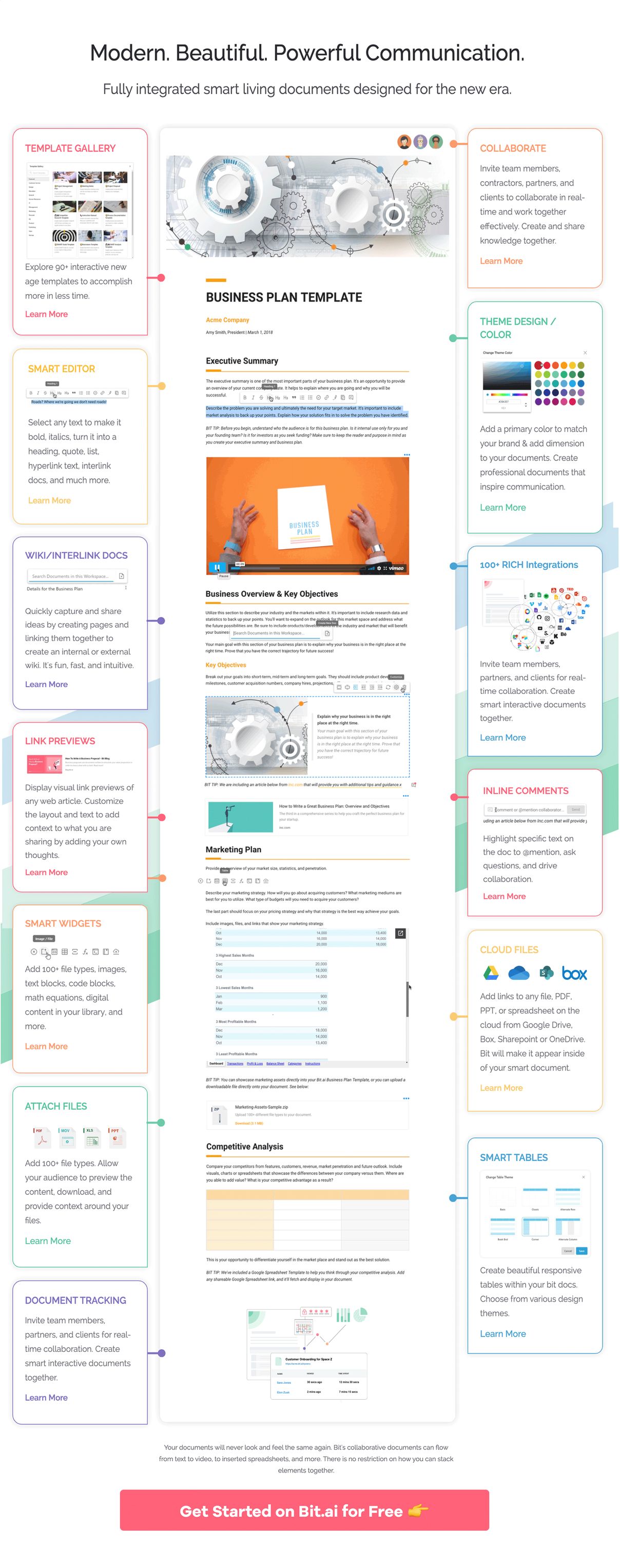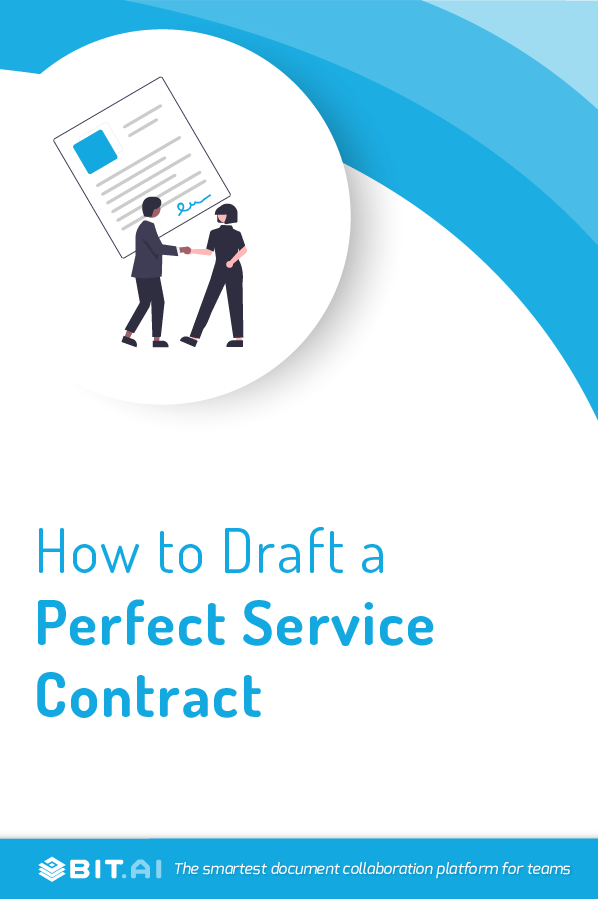When you want a niche job to be done for your business, it often makes more sense to hire an external company or person to carry out the job.
Why? Well, the external parties, also known as contractors, are more skilled and efficient in performing their specialized tasks. So, they are able to offer a more comprehensive service, often at a lower price.
But, whenever you hire a contractor to carry out a service for your business, it is always important that you are on the same page regarding the expectations, terms and conditions, and compensation.
A service contract achieves this by clearly noting down all the details of the agreement. In this article, we’ll be talking about the various types of service contracts, their importance, and how to write them!
What is a Service Contract? (Definition)
A service contract is defined as an agreement that defines the terms and conditions of the service that is being carried out by a service provider in exchange for compensation.
It can also be used in a scenario where a manufacturer offers servicing for its product. Hence, in this case, the service contract outlines the terms of the warranty and the servicing that is covered under it.

A service contract is usually drafted by the service provider, and then signed by the company recruiting the services, but it can work either way based on individual preferences.
Types of Service Agreements
There are various types of service agreements applicable for different industries and the nature of work required:
Type 1. Artist Service Contract
An artist service contract is used when working with freelance artists like designers, painters, mural artists, etc. These artistic services are variable and based on the creativity of the artist.
This contract helps both parties come to a consensus on the general direction, purpose, and expectations of the art being done. This would also include the payment terms and timeline by which the artist is expected to finish the art.
Type 2. Consultant Service Contract
This kind of contract is used in more specialized and skilled work like legal advising, IT servicing, etc. These contracts are also known as consulting agreements.
Companies have an option to hire employees that would carry out these kinds of tasks, but hiring consultants allows for specialized work from people who have experience in the respective field.
Since their business is based upon solving that particular problem, they have more expertise and can offer better solutions.
Type 3. Product Servicing Contract
This is the most unique type of service contract because this kind of servicing is not B2B, but B2C.
Whenever a manufacturer sells technological products that would require upkeep and maintenance in the future, they include service contracts.
These service contracts outline the warranty rules, the terms and conditions of periodic servicing, and the price for servicing based on the problem with the product.
Hence, in all the various types of service contracts, there is a legal binding between the two parties.
Type 4. General Service Contract
This kind of contract applies to workers like plumbers, electricians, security, etc that are hired on a contract basis. In a business scenario, they are hired for the upkeep and maintenance of office spaces.
These kinds of contractors are skilled people that have specialized in their field and can hence do an efficient job. They use their own tools and equipment and have experience working with more than one client.
Read more: Service Proposal: What is it & How to Create it?
Reasons to Create Service Agreement
1. Prevents Miscommunication
Verbal agreements can often lead to complications, as many factors like accents, memory, and language barriers can alter the things remembered.
In fact, since clients usually request quotes from various service providers before choosing one, they may end up confusing your offer with someone else’s.
In a service contract, everything is documented and read thoroughly before signing. A service contract clearly states all the tasks, duties, and responsibilities of the service provider.
It also covers the terms and conditions and hence it sets clear expectations for both the parties involved.
2. Establishes a Timeline to Adhere to
A service contract outlines the timeline that the service provider would workaround. Since many kinds of services like repairs, maintenance, etc are required to be done periodically, having a timeline of servicing allows for consistency.
This also makes the total servicing time clear to the client, so they can’t demand more when the stipulated timeframe is over.
3. Ensures Decided Payment Terms
A service contract clearly states the payment terms and includes clauses that may affect the amount paid.
Hence, it prevents hassling or demands of change in payment by any of the parties, thereby protecting the service provider as well as the client.
4. Offers Legal Protection
A service contract is signed by both parties after thorough reading.
Hence, if any problem arises in the future, a service contract is proof of the agreement that was decided and can offer legal protection in case things go sour between the service provider and the client.
Read more: Consulting Report: What is it and How to Create it?
How to Create a Service Contract? Follow these Steps!
Here are the essential components that you should include when creating a service contract:
Step 1. Mention the Name of the Service Provider
Begin the contract with the names of the service provider and the client.
Step 2. Scope of Work
This section covers in detail the responsibilities of the service provider.
What are the services that they will provide? How often do these services have to be carried out? What tools and machinery is the service provider going to use to ensure their best work? What is the definition of “best work” and how will the parties assess if the work has been done properly?
Make sure the agreement has all of these points in detail, otherwise it’ll be impossible to determine whether the service provider has met the expectations that were set.
Step 3. Elaborate on Servicing Period
Elaborate upon how long the service provider is expected to work for the client. If there are any periodic servicing requirements, make sure you note the frequency down.
Step 4. Add Payment Terms of Service
Describe in detail the payment terms of the service, which includes the exact amount to be paid, along with the currency and the mode of payment.

Elaborate on whether there will be a one-time payment or recurring payments. If the service provider is being hired for a short timeframe, explain when the payment will be made. If the consultant will be hired on a recurring basis, state the timeline of payments and how they will be split up.
Step 5. Intellectual Property Clauses
The agreement should address the ownership of the work done by the service providers. This is applicable for the artist service providers (that provide designs and art) or contractual service providers (legal advice, IT work).
In most cases, the work done by the service providers becomes the property of the client. However, depending on the type of work, the parties can come to an agreement about the ownership of work.
Step 6. Confidentiality Clauses
State if the work done by the service provider has to be kept private or not. Again, this is applicable for sensitive service deals that involve internal information being shared with the service providers.
Classify which information has to be kept confidential and what is open to the public. State the financial and legal penalties for breaching these confidentiality clauses.
Step 7. Dispute Clauses
This section provides the guidelines that should be followed in case there is a dispute between the service provider and the client.
Step 8. Termination Clauses
List the conditions that would be applicable for the termination of this contract, such as contingencies or unforeseen circumstances.
Step 9. Breach of Contract Clause
The last clause should specify what would happen if any of the parties breach the agreement. State in detail the consequences for breach of each of the clauses.
Step 10. Signing Area
In the end, provide space for both the parties to sign the agreement, making the contract binding.
As you can see with these steps, creating a service contract requires a lot of effort and attention to detail. This kind of contract also usually requires more than one person to work on it.
For example, when you are creating the draft of the contract, you would like to have it proofread by your seniors and employees from other departments, just to make sure the contract is in alignment with the overall goals of the organization.
Hence it requires a collaborative effort. This can’t be done with traditional document creation tools like MS Word. A service contract needs to be made on a collaborative platform that allows you and other employees to work on the document together, in real-time.
There needs to be a way for you to comment on individual lines of text, even while working remotely. This is why Bit is the perfect solution for making service contracts.
Read more: Operating Agreement: What is it & How to Draft One for your LLC?
Bit.ai: Tool for Creating All sorts of Documents
 Bit.ai is the most progressive document collaboration tool that also allows you to embed any kind of media like images, videos, and links directly into your documents. This cloud-based platform is amazing for creating various types of contracts. Here are a few reasons why you should use Bit for document creation:
Bit.ai is the most progressive document collaboration tool that also allows you to embed any kind of media like images, videos, and links directly into your documents. This cloud-based platform is amazing for creating various types of contracts. Here are a few reasons why you should use Bit for document creation:
- Collaborate in Real-Time: Bit allows you to work with multiple people in real-time. While creating a service contract, you want to work with other employees in your organization so everyone can add their own clauses according to their departmental goals. Bit allows all the parties to work faster and add their own viewpoints simultaneously, rather than waiting for the other to finish.
- Negotiate Using Comments: Collaborators can comment on individual pieces of text or phrases that they feel need to be altered. You can also add the client as a collaborator, so you can negotiate with them in real-time, line by line. Hence, clauses in service contracts can be modified accordingly. Once the modification is done, comments can be “resolved” and the client can move on to reviewing the next clause.
- Create Interactive Documents: Use Bit to embed images, videos, and any type of media right into your document. For example, while creating a contract for a potential client, you can attach images of your services and videos that show the procedures carried out. You can add this media in the document itself so that it becomes more engaging and appealing to potential clients.
- Document Templates: Bit has several templates that help you get started with making different types of contracts. The framework is already laid out, so all you need to do is add the details that are relevant to your specific contract!
- Client Portal: On Bit, you can make virtual spaces for you and your clients. These workspaces can be customized, hence allowing you to have different workspaces for different clients. You can share all your service contracts and other related documents with your clients on the portal itself, hence minimizing the need for sending emails back and forth and losing track of important documents!
Conclusion
A service contract is an essential part of the process of finalizing services for clients. It helps prevent misunderstandings and finalizes the agreement between both parties.
We hope you use the steps mentioned above to write the most comprehensive service contracts!
Remember to use Bit so you can work collaboratively, embed media, and ensure a smooth workflow of assessing your contracts. Don’t be too late! Get started with creating your service contracts on Bit today!
Further reads:
Sales Contract (Agreement of Sales): What is it & How to Create One?
Employment Contract: What is it & How to Make it? (Free Template Included)
Purchase Orders: What are they & How to Create them?
Contract Termination Letter: What is it & How to Write it?
Vendor Agreement: What is it and How to Create it?
Shareholder’s Agreement: What is it & How to Create it?
Contract Workers Vs Employees: Learn About The Major Differences!




